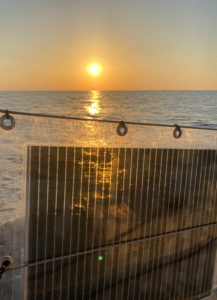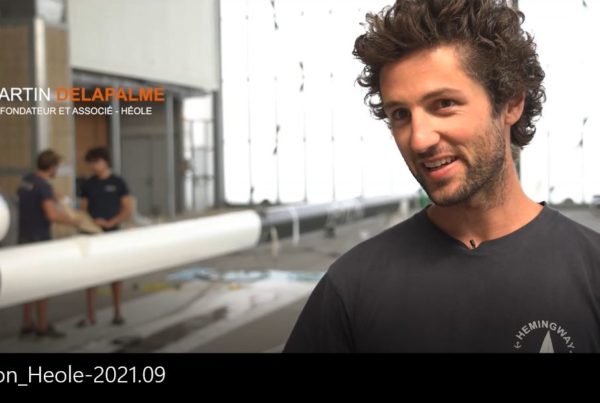Guillaume Wantz transformed his sailboat this summer into a real measurement laboratory. Our organic solar ace (OPV) left with the latest organic solar sail prototype. As a result, tests and measurements over 800 nautical miles covered over a period of 6 weeks of cabotage between the mainland and Corsica.

In collaboration between Héole and his laboratory at the University of Bordeaux, Guillaume has specially designed a waterproof, automated and autonomous measuring device. It allows it to collect solar photovoltaic electricity production from several solar modules every minute.
In particular, attention was paid to the systematic comparison of OPV modules against reference silicon modules. Beyond the electrical parameters of solar modules and batteries, the acquisition integrates the measurement of multiple environmental parameters such as: temperature, calibrated solar irradiance, azimuth, speed, GPS position and humidity which are to be correlated with the production of electricity.
The results are very convincing.
The data analysis work is colossal, but rich in information.
Heole’s OPV modules withstood these extreme conditions of Mediterranean heat, strong winds and saline atmosphere very well. Electricity production was substantial despite a vertical orientation and rarely optimal positioning of the modules in relation to the sun (because we do not choose the orientation of the boat which is dictated by the wind). Over the entire cruise, if we normalize the energy produced at the peak power of the modules, then the OPV produces on average 50% more electricity than the silicon module. Under certain conditions, Guillaume even observes a clear superiority of OPV modules over silicon capable of producing up to twice as much integrated electrical energy in a day.

These measurement campaigns are essential to understand and improve the energy production process of our future sails.
The results are very encouraging for Héole. We are confident and looking forward to our first large sails producing this electricity in excess of what is needed. Such a surplus of renewable energy could contribute to the development of electric motors for the sailboats of tomorrow.





